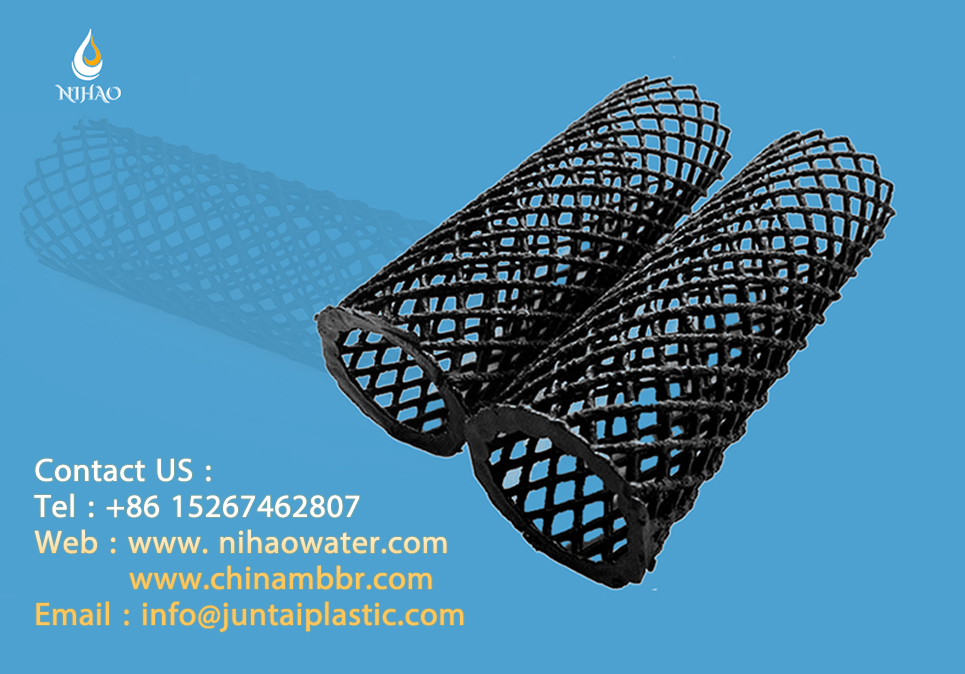 +86-15267462807
+86-15267462807
BIO BLOCK MEDIA is a structured filter material made of materials such as high-density polyethylene (HDPE) with a unique mesh tube structure that is welded together to form a block shape. This design makes BIO BLOCK MEDIA perform well in biological treatment processes, especially for domestic sewage, industrial wastewater and water treatment in the field of aquaculture.
Efficient removal of pollutants: BIO BLOCK MEDIA can efficiently remove organic matter, nitrogen, phosphorus and other pollutants in sewage through the biofilm on its surface, improving the effluent water quality.
Easy maintenance: The structural design of BIO BLOCK MEDIA makes its maintenance simple and convenient, not easy to clog, and does not require frequent replacement.
Long life: Due to its excellent material and reasonable structural design, BIO BLOCK MEDIA has a long service life and can reduce long-term operating costs.
Strong adaptability: BIO BLOCK MEDIA can adapt to different water quality conditions and treatment process requirements, and has high flexibility and adaptability.

The working principle of BIO BLOCK MEDIA is mainly based on biofilm technology. When sewage flows through BIO BLOCK MEDIA, the microorganisms in it will attach to the surface of the filter material and form a biofilm. This biofilm can decompose organic pollutants in sewage and remove nutrients such as nitrogen and phosphorus through processes such as nitrification and denitrification. As the biofilm gradually thickens and matures, its treatment efficiency will continue to improve.
BIO BLOCK MEDIA is widely used in the following fields:
1. Urban sewage treatment In urban sewage treatment systems, BIO BLOCK MEDIA is used as the main filler of biofilters. When urban sewage flows through a biofilter equipped with BIO BLOCK MEDIA, microorganisms will attach to its surface and form a biofilm. This biofilm effectively removes organic matter, nitrogen, phosphorus and other pollutants in sewage through adsorption, degradation and other mechanisms, thereby improving the effluent quality and meeting the discharge standards. In addition, the scouring resistance of BIO BLOCK MEDIA also ensures that it can operate stably in high-load and high-flow urban sewage treatment environments.
2. Industrial wastewater treatment
BIO BLOCK MEDIA also shows excellent treatment effects for wastewater generated by industrial industries such as textiles, printing and dyeing, papermaking, and chemicals. These wastewaters usually contain high concentrations of harmful substances such as organic matter, dyes, and heavy metals, which pose a threat to the environment and human health. By applying BIO BLOCK MEDIA to industrial wastewater treatment systems, the concentration of pollutants in wastewater can be significantly reduced, reducing pollution to the environment. At the same time, BIO BLOCK MEDIA has strong adaptability and can treat industrial wastewater with different water quality and process requirements.
3. Rural domestic sewage treatment
In rural areas, due to the relatively backward infrastructure, the problem of domestic sewage treatment has always been a difficult problem. BIO BLOCK MEDIA has become an ideal choice for rural domestic sewage treatment due to its high efficiency, economy, and easy maintenance. By combining BIO BLOCK MEDIA with anaerobic tanks, aerobic tanks, etc., a sewage treatment system suitable for rural areas can be constructed. This system can not only effectively remove pollutants in sewage, but also realize the resource utilization of sewage, such as for farmland irrigation.
4. Ecological restoration of rivers and lakes
The eutrophication problem of rivers and lakes is a focus of current water environment management. By placing BIO BLOCK MEDIA in polluted rivers and lakes, the biofilm on its surface can be used to promote the reproduction and metabolic activities of microorganisms in the water, thereby accelerating the decomposition and removal of organic pollutants in the water. At the same time, BIO BLOCK MEDIA can also provide habitats and breeding places for aquatic organisms, promoting the recovery and balance of river and lake ecosystems.
5. Wetland protection and restoration
As one of the important ecosystems in nature, wetlands have multiple functions such as regulating climate, purifying water quality, and protecting biodiversity. However, with the continuous increase in human activities, wetlands are facing serious degradation and destruction. In wetland protection and restoration projects, BIO BLOCK MEDIA can be used as an effective ecological restoration material. By placing it in wetlands, the biodiversity and stability of wetland ecosystems can be increased and the self-recovery capacity of wetlands can be improved.